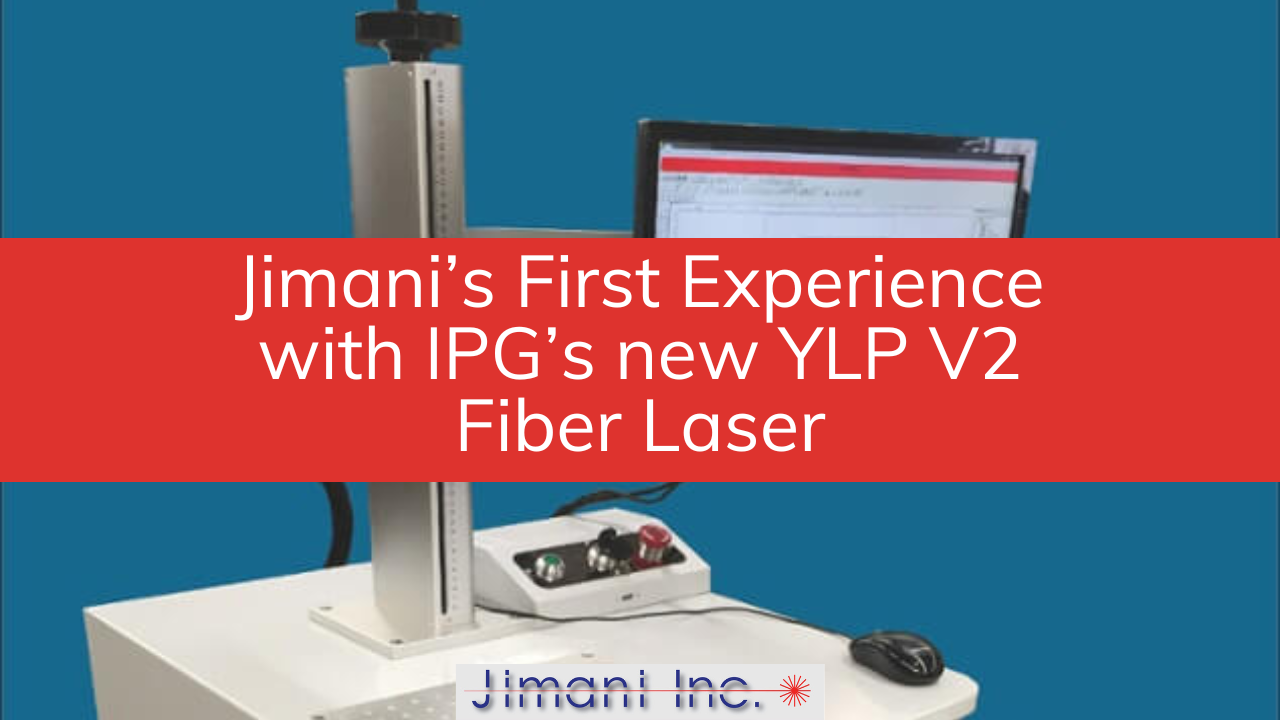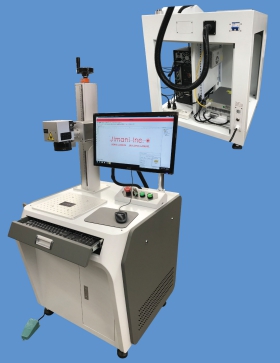Evolution of Jimani’s Low Cost Hybrid Laser Marking Systems
The Low-Cost Hybrid Laser Marking Systems have become the mainstay of Jimani's laser marking system...
By: Jim Earman on 2/27/24 8:00 AM

When I recently placed an order for a few new IPG YLP type lasers to be used in Jimani Langolier Fiber Laser Marking Systems, IPG Sales explained to me that all YLP lasers were going to migrate toward the new V2 design with the Rev. E interface.
 Charlie Bridge, Business Development Manager at IPG, explained that after IPG’s inventory of YLP Rev. B HC lasers is depleted, all new manufacturing of YLP lasers would be with the V2 design and the Rev. E interface.
Charlie Bridge, Business Development Manager at IPG, explained that after IPG’s inventory of YLP Rev. B HC lasers is depleted, all new manufacturing of YLP lasers would be with the V2 design and the Rev. E interface.
The Rev. B and Rev. E interfaces are similar but not identical. The B interface provided 7 ground connections on the “Control Interface 25-Pin D-shape Connector”. Although the V2 Rev. E also uses a 25 pin D connector there is now only one of those pins, pin 14, available as a ground connection. Previously used ground pins, 10, 11, 12, 13, 15 and 24 are used for either the new “Pulsed Lasers User Control Utility” or additional Laser State monitoring functions.
Another difference on the V2 is the 24 VDC power connector to the laser which now requires a DB-7W2 connection and a separate 24 VDC housekeeping input.
The Laser Control chassis on our Langolier family of Fiber Laser Marking Systems does not support an IPG Rev. E interface configuration without modification although the modifications are not severe. Conversely, a Langolier Laser Control chassis with the Rev. E wiring modifications will support earlier YLP laser interfaces. One of the new fault conditions made available on the Rev. E interface is a “Power Supply Alarm” which monitors the 24 VDC input voltage to the YLP laser module.
IPG told me that if there is a 24 VDC out of range condition on a Rev. B laser, the laser simply shuts down and it is up to the user to figure out why that happened. Jimani decided that this condition was worth monitoring so we modified the Langolier Laser Control chassis with another LED indicator connected to data lines for that fault condition. If a Rev. B laser is used in a Langolier chassis wired for the Rev. E interface, the laser will function properly, but the Power Supply Alarm is not monitored.
The “Pulsed lasers User Control Utility” GUI seems as though it is going to be an especially useful troubleshooting and diagnostic tool. It requires an RS232 connection from the YLP V2 laser module to the computer. Since serial ports are becoming scarce on modern motherboards, we used a USB to serial converter to connect the laser RS232 port to the computer. It did not work at first because IPG’s RS232 connector requires a null modem wiring configuration and pins 2 and 3 on the 9-pin connector needed to be swapped. Adding something like this L-COM DMA030MF SLIMLINE REVERSING ADAPTER DB9 MALE / FEMALE to the USB/Serial Cable does the trick.
The pulse frequency range on V2 lasers has been extended. The pulse frequency of a 50 watt YLP HC laser, for example, is limited to a minimum pulse frequency of 50 KHz, the pulse frequency at which the maximum energy per pulse is developed. On the YLP V2 a 50 watt laser can operate as low as a 2 KHz pulse frequency and still maintain the maximum pulse energy, about 1 mj, per pulse.
The pulse frequency range high end has been extended to 200 KHz but with lower pulse energy above a pulse frequency of 50 KHz. The 100 watt V2 has a pulse frequency range of 5-200 KHz with maximum pulse energy occurring at 100 KHz or below.
Jimani has come up with a modification kit which allows a Langolier Laser Control Chassis wired for a Rev. B interface to be upgraded with the Rev. E wiring changes.
The Low-Cost Hybrid Laser Marking Systems have become the mainstay of Jimani's laser marking system...
Laser etching glass produces a frosted direct part mark on a traditionally difficult-to-mark...
Your production line depends on consistent marking, but older laser systems create bottlenecks with...